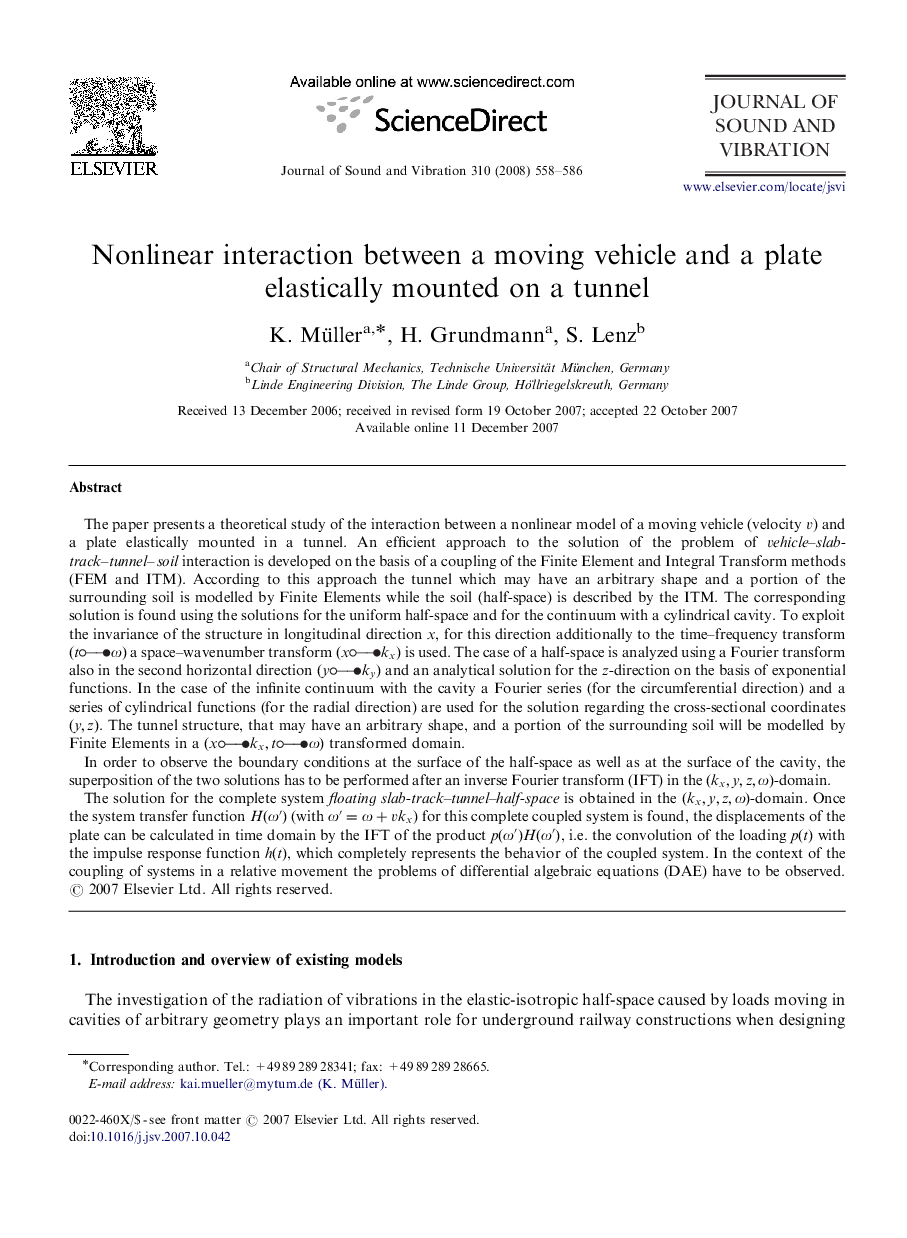| Article ID | Journal | Published Year | Pages | File Type |
|---|---|---|---|---|
| 291830 | Journal of Sound and Vibration | 2008 | 29 Pages |
The paper presents a theoretical study of the interaction between a nonlinear model of a moving vehicle (velocity vv) and a plate elastically mounted in a tunnel. An efficient approach to the solution of the problem of vehicle–slab-track–tunnel–soil interaction is developed on the basis of a coupling of the Finite Element and Integral Transform methods (FEM and ITM). According to this approach the tunnel which may have an arbitrary shape and a portion of the surrounding soil is modelled by Finite Elements while the soil (half-space) is described by the ITM. The corresponding solution is found using the solutions for the uniform half-space and for the continuum with a cylindrical cavity. To exploit the invariance of the structure in longitudinal direction x , for this direction additionally to the time–frequency transform (tω)(tω) a space–wavenumber transform (xkx)(xkx) is used. The case of a half-space is analyzed using a Fourier transform also in the second horizontal direction (yky)(yky) and an analytical solution for the z -direction on the basis of exponential functions. In the case of the infinite continuum with the cavity a Fourier series (for the circumferential direction) and a series of cylindrical functions (for the radial direction) are used for the solution regarding the cross-sectional coordinates (y,z)(y,z). The tunnel structure, that may have an arbitrary shape, and a portion of the surrounding soil will be modelled by Finite Elements in a (xkx,tω)(xkx,tω) transformed domain.In order to observe the boundary conditions at the surface of the half-space as well as at the surface of the cavity, the superposition of the two solutions has to be performed after an inverse Fourier transform (IFT) in the (kx,y,z,ω)(kx,y,z,ω)-domain.The solution for the complete system floating slab-track–tunnel–half-space is obtained in the (kx,y,z,ω)(kx,y,z,ω)-domain. Once the system transfer function H(ω′)H(ω′) (with ω′=ω+vkxω′=ω+vkx) for this complete coupled system is found, the displacements of the plate can be calculated in time domain by the IFT of the product p(ω′)H(ω′)p(ω′)H(ω′), i.e. the convolution of the loading p(t)p(t) with the impulse response function h(t)h(t), which completely represents the behavior of the coupled system. In the context of the coupling of systems in a relative movement the problems of differential algebraic equations (DAE) have to be observed.
